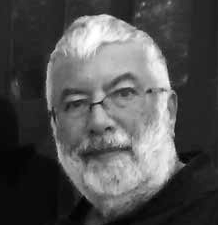 Paul Williams describes a tragedy that was a key event in the history of learning difficulty services in the late 20th century.
Paul Williams describes a tragedy that was a key event in the history of learning difficulty services in the late 20th century.
Coldharbour Hospital at Sherborne in Dorset was built early in the Second World War as an orthopaedic hospital for injured Navy personnel. After the war the accommodation was used to house people with learning difficulties, becoming a hospital within the NHS in 1948. By 1970 the hospital housed around 350 people. Accommodation included a single H-shaped ‘villa’ housing 85 men.
Growing concern at that time about the poor conditions in such hospitals led the local hospital authority to draw up a plan to split the large villa into two, reduce the numbers accommodated and provide a more homely environment. The large dormitories were divided up with partitions and wardrobes so that people had a more personal and less communal area to sleep in. One of these dormitories, re-named Winfrith ward, still housed 36 people, all young men aged between late teens and early forties, and was locked at night to prevent people wandering. At 2.30 am on 5 July 1972 a fire broke out on the ward and 30 of the people sleeping there were killed, mostly by smoke inhalation.
Oral evidence
An inquiry into the fire was immediately initiated by the government and it is remarkable how quickly it reported – in great contrast to the lengthy and very expensive inquiries we are used to now. Just two days after the fire, four people were appointed as the Inquiry team. On 17 July they began six days of hearing oral evidence, and they also considered 152 statements collected by the police. A report was then prepared and delivered to the Secretary of State in August which was presented to Parliament by December. The Chair of the Inquiry team was a judge, Desmond Vowden, and the other members were R.W. Lockett, a senior nurse with expertise in staffing requirements and the care of people with difficult behaviour, Dr Gerald O’Gorman, a prominent consultant psychiatrist from Borocourt Hospital in Berkshire, and P.S. Wilson-Dickson, a senior fire inspector at the Home Office.
The Inquiry concluded that a person being cared for on the ward who had been reprimanded by staff the previous day, had acquired a lighter or matches and had set fire to bedding or clothing. One of the six survivors of the fire was later transferred to Rampton Special (high security) Hospital. However, the Inquiry also found several factors contributed to the large number of deaths.
Flammable partitions
The newly refurbished ward had been equipped with flammable partitions, decorations and furniture. Advice on the use of non-flammable materials by fire officers had either not been communicated to the architects, designers and planners, or had been overruled to retain greater homeliness. It had been assumed by the planners that staff would always be present in or near the dormitory but the one member of staff on night duty there was allowed to take a break and had left the dormitory area at around 2.20 am to have a cup of tea with the senior night staff manager in a kitchen some distance away. They were alerted to the fire only by cries from the dormitory at 2.50 am after the fire had been smouldering for around 20 minutes producing lethal toxic smoke.
After the alarm was raised other night staff rushed to the ward but did not have a master key to the dormitory doors and this delayed entry to rescue people. Fire-fighting and evacuation training for staff had been inadequate, and no sprinkler system or smoke detectors had been fitted in the dormitory. The Inquiry produced recommendations in all these areas.
In their book Learning from Disasters, Toft and Reynolds (1997) point out that such disasters are rare because they are usually the result of a whole series of unfortunate factors coming together in a ‘systems failure’. The implication is that if any one of these factors had been different, the tragedy might have been prevented. For example, provision of smoke alarms or a rule that staff should never leave the dormitory unattended would probably have prevented so many deaths from the fire. It is not necessary to go overboard with excessive restrictions as long as some effective safeguards are in place.
The Coldharbour fire did lead to the introduction of regulations that make adherence to the advice of fire officers compulsory in the planning and operation of all public buildings, including hospitals and care homes, and the tragedy hastened the move towards community care and the closure of large institutions. In a moving funeral and later a packed memorial service in Sherborne Abbey, ‘the boys’, as they were affectionately known, were honoured and remembered. All 30 were buried in a mass grave at Lenthay Road Cemetery in Sherborne, where a simple stone commemorating the event can still be visited. Coldharbour Hospital closed in the late 1980s and the site is now an industrial park.
References
Report of the Committee of Inquiry into the fire at Coldharbour Hospital, Sherborne (1972). London: Stationery Office.
Toft, B. And Reynolds, S. (1997) Learning from Disasters. Leicester: Perpetuity Press.
